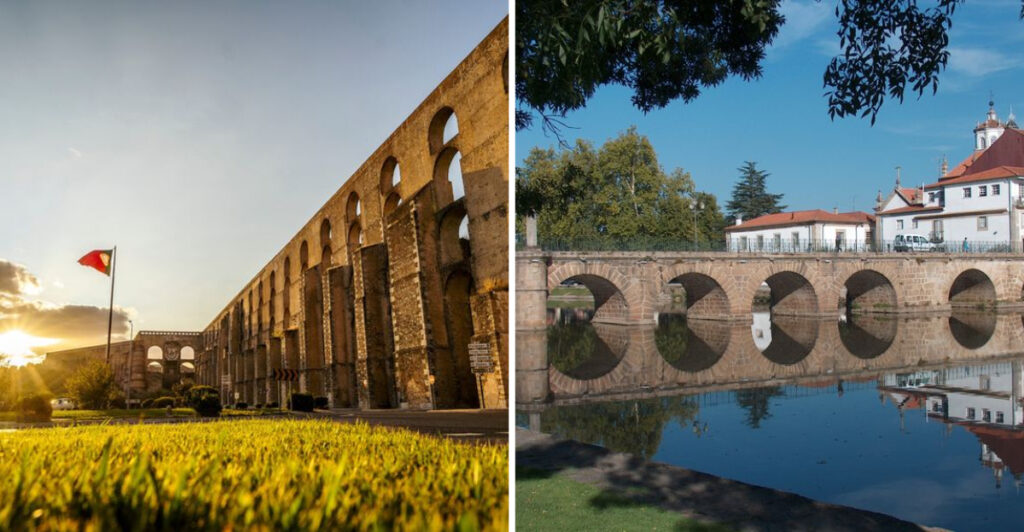Portugal is renowned for its stunning landscapes and rich history, yet there are numerous cities that remain hidden gems, waiting to be discovered. This journey takes you through 23 lesser-known cities, each offering its unique charm and allure. From quaint fishing villages to vibrant cultural hubs, these cities are the unsung heroes of Portugal’s tourism scene.
1. Viana do Castelo
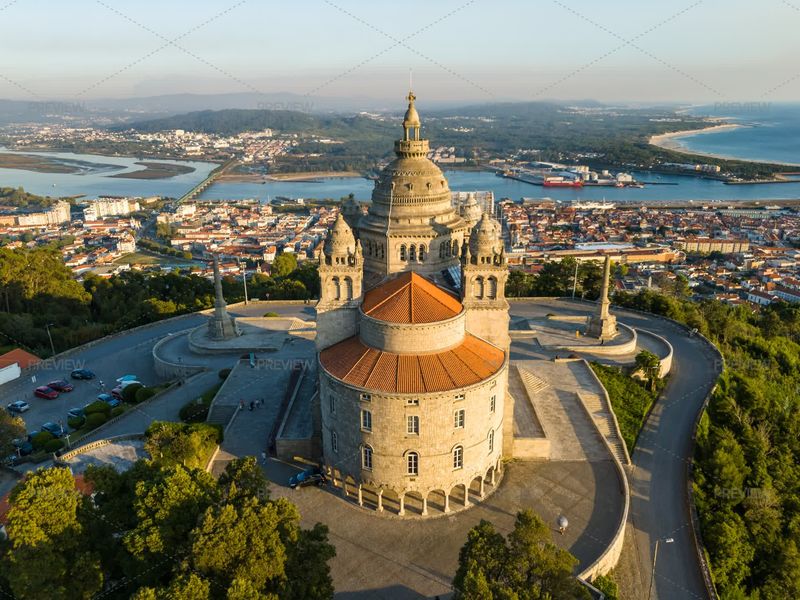
In Viana do Castelo, history whispers through the cobblestone streets. This enchanting city, nestled at the mouth of the Lima River, captivates visitors with its blend of Gothic and Manueline architecture. The Santa Luzia Sanctuary, perched atop a hill, offers panoramic views that are nothing short of breathtaking.
The local cuisine, rich with seafood, tells the tale of a city deeply connected to the sea. Each visit promises a new discovery, from charming boutiques to vibrant festivals.
A leisurely stroll along the riverside promenade is a perfect way to end the day.
2. Bragança
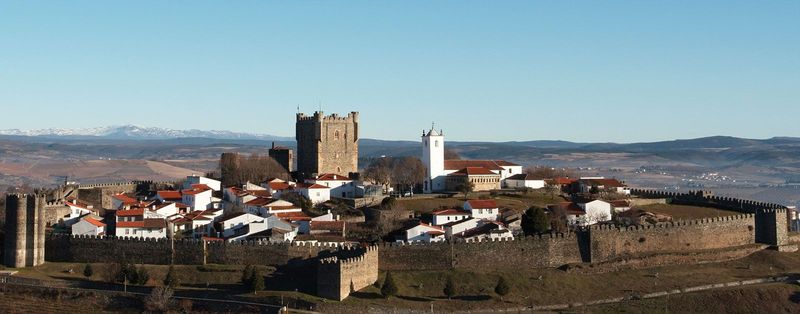
Bragança, a northern treasure, boasts a captivating blend of history and nature. Its medieval castle stands as a sentinel over the city, offering a glimpse into Portugal’s storied past. Around the castle, traditional stone houses and narrow alleys invite exploration.
The Montesinho Natural Park, just outside the city, is a haven for wildlife enthusiasts. Here, the landscape shifts from rolling hills to dense forests, home to diverse flora and fauna.
A visit to Bragança is incomplete without tasting the local delicacy, alheira, an unforgettable culinary experience.
3. Covilhã
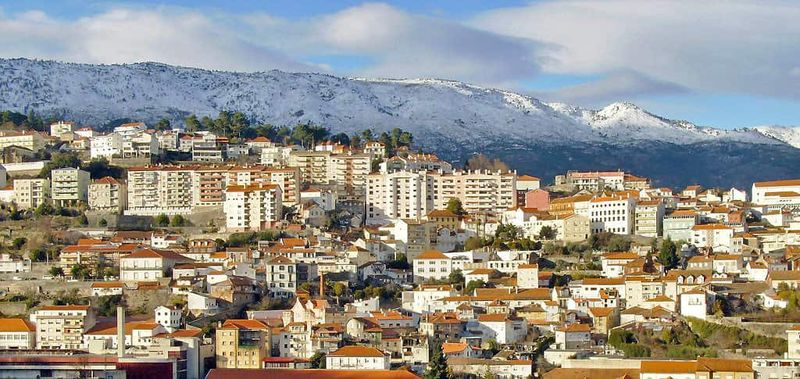
Nestled in the foothills of the Serra da Estrela mountains, Covilhã is a gateway to Portugal’s highest peaks. This city, once a hub for the wool industry, now embraces its textile heritage with pride.
Visitors can explore museums dedicated to this rich history, or venture into the mountains for skiing and hiking adventures. The scenic views from these heights are a testament to nature’s grandeur.
Covilhã’s vibrant student population ensures a lively cultural scene, with festivals and events throughout the year, blending tradition and modernity seamlessly.
4. Elvas
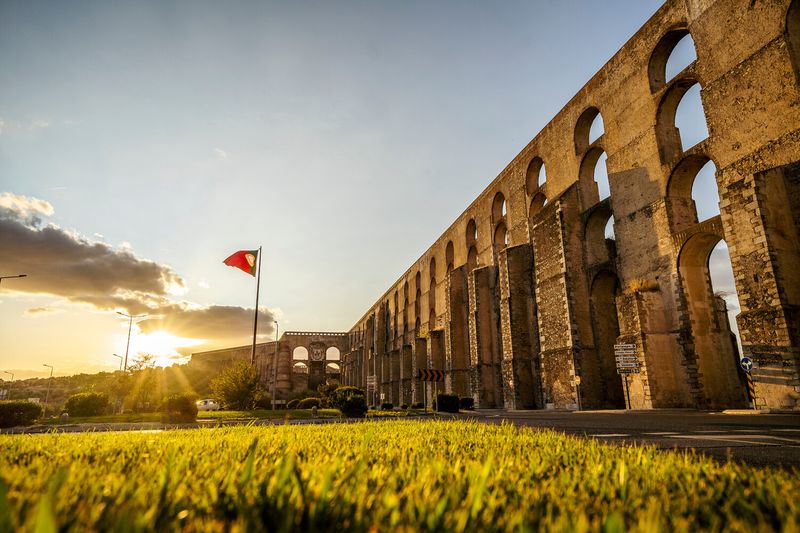
Elvas, a city fortified by history, stands as a testament to Portugal’s military ingenuity. Its star-shaped walls and intricate fortifications are recognized as a UNESCO World Heritage site. Visitors can wander through tunnels and climb ramparts, imagining battles fought long ago.
The Amoreira Aqueduct, an architectural marvel, stretches across the landscape, a symbol of human creativity and endurance.
In Elvas, every corner tells a story, from the bustling town square to the quiet, shaded alleyways. The city’s rich cultural heritage is celebrated through music and art festivals year-round.
5. Chaves

Chaves, a city with ancient roots, is known for its Roman heritage. The iconic Roman Bridge, still in use today, connects the past to the present. Walking across it feels like stepping back in time.
Chaves is also famed for its thermal spas, attracting visitors seeking relaxation and healing. The mineral-rich waters are believed to have therapeutic properties.
Culinary delights await in Chaves, with local specialties like smoked sausages and hearty stews. The city’s warm hospitality ensures that every visitor feels at home, eager to return.
6. Castelo Branco
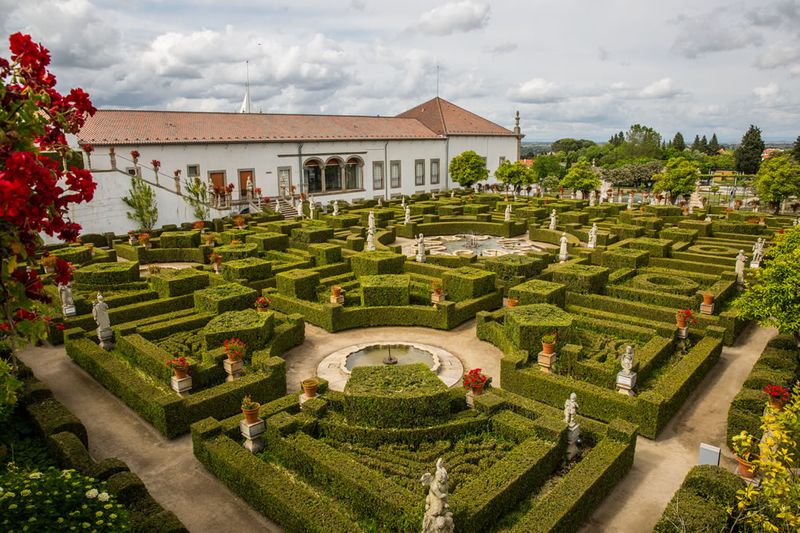
Castelo Branco, a city that marries history with natural beauty, invites exploration. The Jardim do Paço Episcopal is a highlight, showcasing Baroque garden designs with ornate fountains and sculptures. This tranquil oasis offers a retreat from the city’s hustle.
The local crafts, particularly embroidery, reflect the city’s artistic soul. Visitors can find intricate designs in local shops, each telling a story of tradition and skill.
Cultural events throughout the year ensure a lively atmosphere. Whether exploring ancient castles or attending a vibrant festival, Castelo Branco enchants every traveler.
7. Guarda
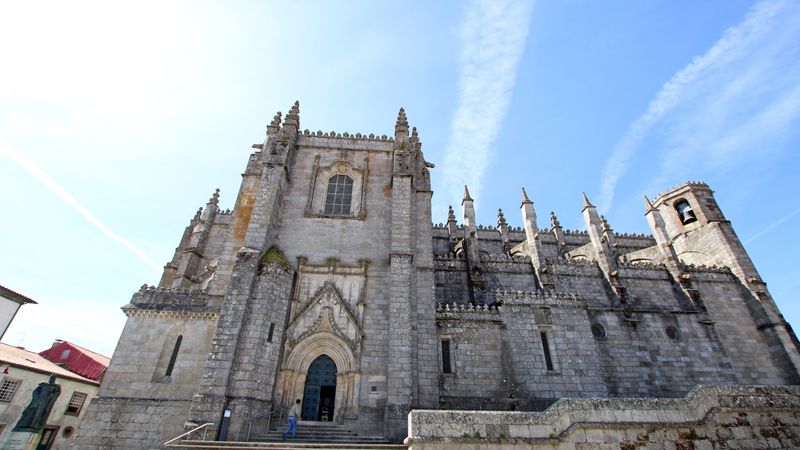
Perched atop Portugal’s highest city, Guarda offers breathtaking views of the surrounding countryside. The medieval cathedral, a Gothic masterpiece, dominates the skyline. Its intricate stone carvings are a testament to the artistry of past craftsmen.
Guarda’s rich history is woven into its streets, where centuries-old buildings stand alongside modern amenities. The city’s altitude brings crisp, refreshing air, perfect for exploring.
Seasonal fairs and traditional festivals add vibrancy to Guarda, offering insights into local customs and folklore. It’s a city where old meets new, creating a unique tapestry of experiences.
8. Portalegre
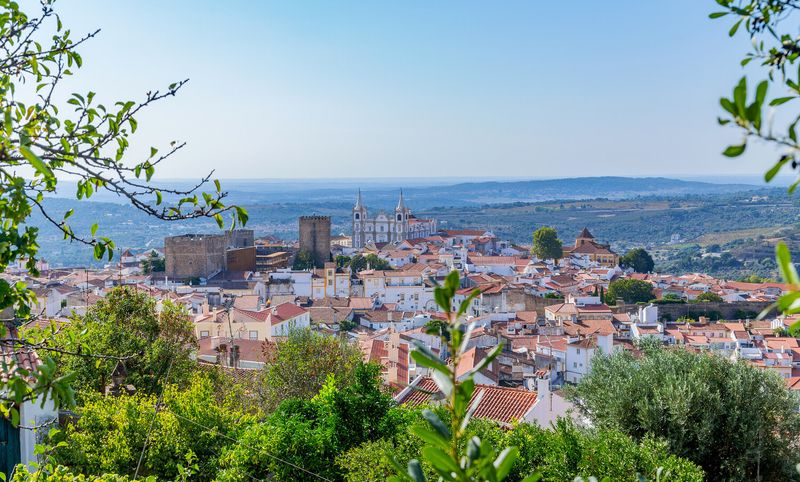
Portalegre, nestled in the Alentejo region, is a tapestry of rolling hills and cork oak forests. This serene city offers a slower pace, inviting contemplation and relaxation. The surrounding landscape is ideal for leisurely walks and scenic picnics.
The Museu da Tapeçaria de Portalegre Guy Fino celebrates the city’s textile tradition, showcasing exquisite tapestries that narrate stories through their intricate designs.
Portalegre’s culinary scene is a delight, with local wines and traditional dishes providing a true taste of the region. It’s a city that enchants with its quiet charm and rich cultural offerings.
9. Lamego
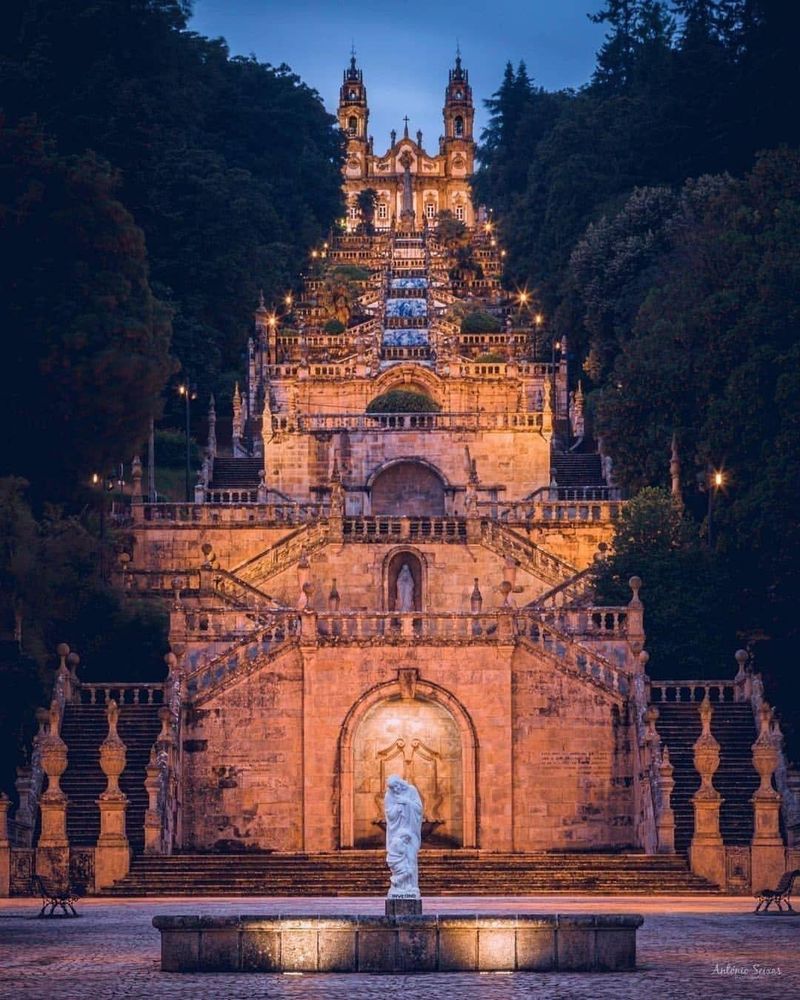
Lamego, a city steeped in religious significance, is renowned for the Sanctuary of Our Lady of Remedies. The sanctuary’s grand staircase, adorned with azulejos, leads pilgrims and visitors alike to a place of serenity and reflection.
The city is also a gateway to the Douro Valley, offering stunning vistas and world-class wines. Vineyards stretch as far as the eye can see, inviting tastings and tours.
Lamego’s vibrant festivals celebrate its cultural heritage, with music, dance, and traditional costumes bringing the streets to life. It’s a city where spirituality and celebration coexist harmoniously.
10. Alcobaça
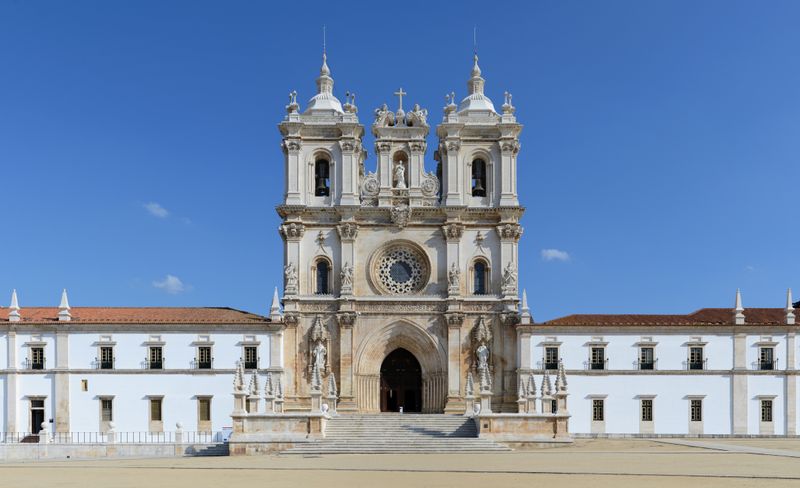
Alcobaça, home to one of Portugal’s most magnificent monasteries, is a city where history and architecture intertwine. The Alcobaça Monastery, a UNESCO World Heritage site, is renowned for its Gothic grandeur and the tragic love story of Pedro and Inês.
Visitors can wander through the monastery’s halls, imagining the echoes of monks who once inhabited them. The city itself is charming, with quaint streets and welcoming cafes.
Alcobaça’s culinary specialties, notably its pastries, are a sweet delight. It’s a city where past and present collide, offering a rich tapestry of experiences.
11. Castelo de Vide

Castelo de Vide, often called the ‘Sintra of the Alentejo’, is a picturesque town with a rich Jewish heritage. Its medieval castle offers panoramic views, while the Jewish quarter tells stories of a vibrant community.
The town’s gardens burst with blooms, providing a colorful contrast to the whitewashed houses. Each corner of Castelo de Vide reveals history and beauty, inviting leisurely exploration.
Local festivals celebrate the town’s traditions, with music and dance bringing the streets to life. It’s a place where history is cherished, and every visitor is welcomed with open arms.
12. Viseu
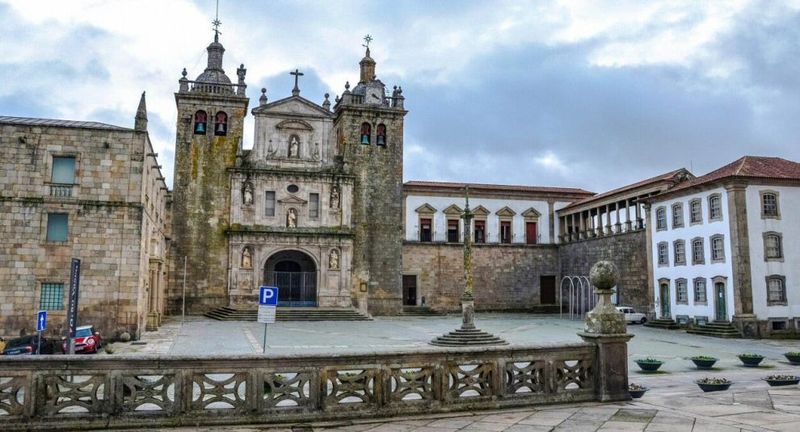
Viseu, known for its art and history, offers a blend of vibrant culture and architectural wonders. The city’s historic center is a labyrinth of narrow streets, leading to the majestic Viseu Cathedral.
Art enthusiasts will find delight in the Grão Vasco Museum, home to works by the renowned Renaissance painter. The city’s calendar is filled with festivals, ensuring a lively atmosphere year-round.
Viseu’s gastronomy is a feast for the senses, with traditional dishes complemented by local wines. It’s a city where every visit promises new discoveries, and every street tells a story.
13. Tomar
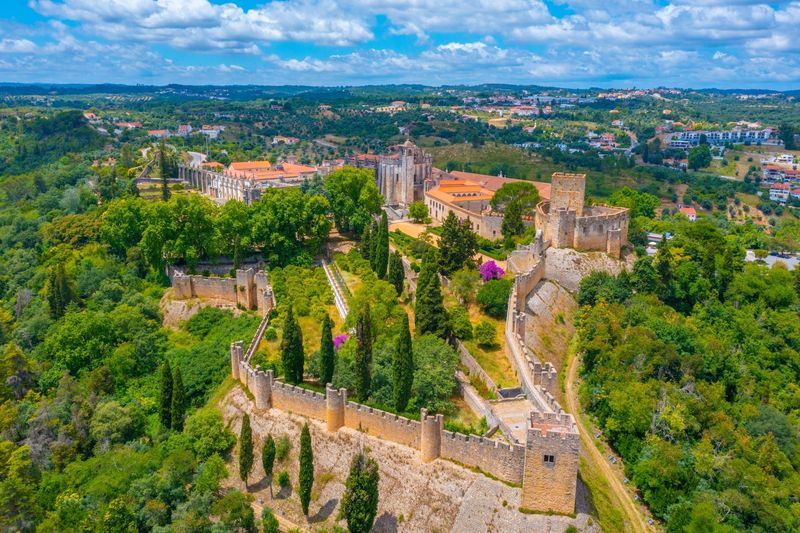
Tomar, a city with a Templar legacy, offers a journey through history. The Convent of Christ, a UNESCO site, stands as a monument to the Knights Templar, with architecture that mesmerizes.
As visitors explore its corridors, the sense of history is palpable. The city itself, with its charming streets and riverside setting, invites exploration.
Tomar’s festivals are legendary, particularly the Festa dos Tabuleiros, which fills the streets with color and tradition. It’s a city where the past is ever-present, yet vibrant with life and culture.
14. Amarante
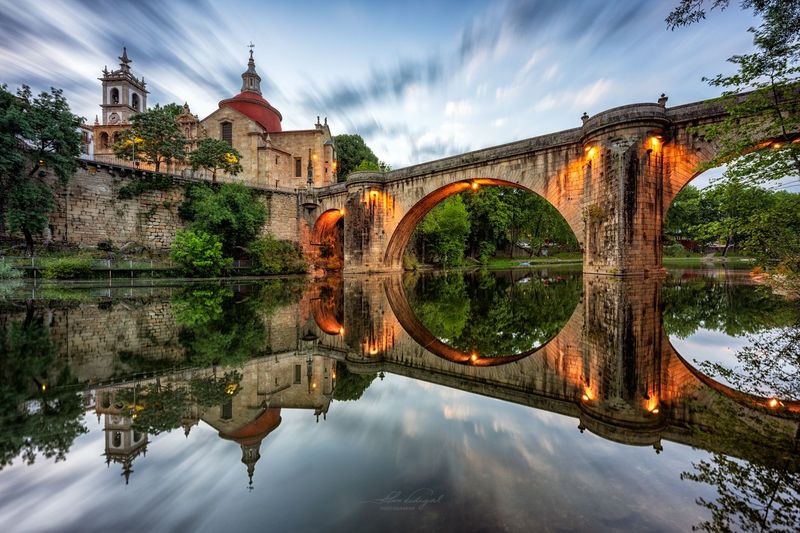
Amarante, a city where romance and history intertwine, is known for the São Gonçalo Bridge. This architectural gem spans the Tâmega River, connecting the city’s storied past with its vibrant present.
The historic center is a delight, with quaint streets and charming cafes offering a taste of local life. Amarante’s connection to art is celebrated in the Amadeo de Souza-Cardoso Museum, showcasing contemporary works.
Local festivals add color and joy, with music and dance filling the air. It’s a city where every visit is an invitation to fall in love with its charm and beauty.
15. Óbidos
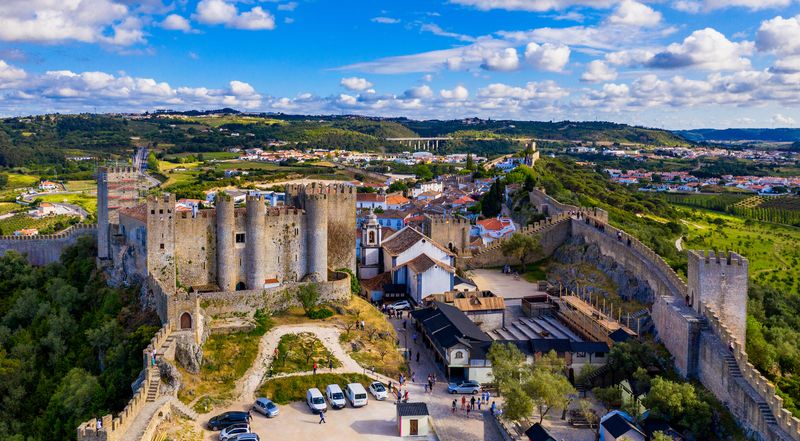
Óbidos, a medieval gem, enchants with its cobblestone streets and historic charm. The town is encircled by ancient walls, offering panoramic views of the countryside from its ramparts.
Visitors can explore the castle, now a pousada, or lose themselves in the labyrinth of alleys filled with artisan shops and cafes. The town’s literary festival, Folio, celebrates its artistic spirit.
Óbidos is also known for its cherry liqueur, ginjinha, served in chocolate cups. It’s a place where history and hospitality blend seamlessly, creating a timeless escape for all who visit.
16. Miranda do Douro

Miranda do Douro, a city perched above the Douro River, offers breathtaking canyon views. This dramatic landscape is a haven for nature lovers and adventurers alike.
The city is also the guardian of the Mirandese language, a cultural treasure celebrated through local traditions and music. Visitors can explore the historic center, where stone houses speak of centuries past.
A river cruise reveals the Douro’s beauty, with opportunities for birdwatching and photography. In Miranda do Douro, each visit is a journey into the heart of the Portuguese landscape and culture.
17. Angra do Heroísmo
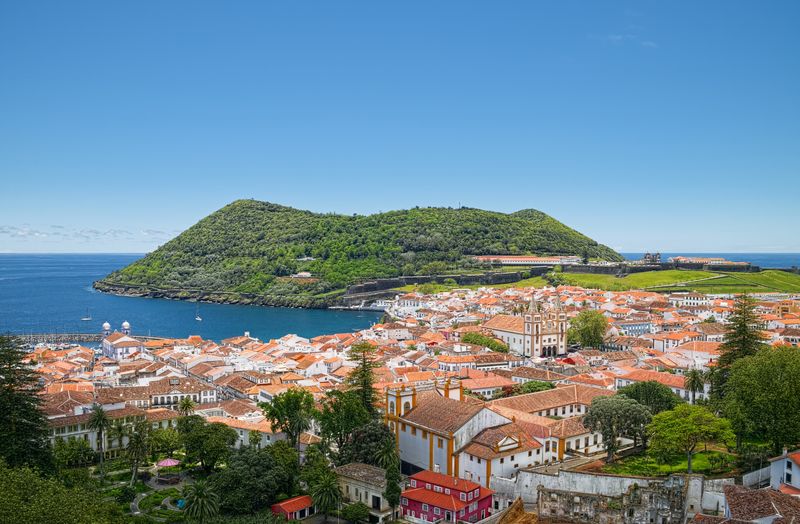
Angra do Heroísmo, located on Terceira Island in the Azores, is a city with a storied past. Its status as a UNESCO World Heritage site reflects its importance in Portuguese history.
The city’s vibrant streets are lined with colorful houses and historic landmarks, including the imposing Sé Cathedral. The Monte Brasil peninsula offers stunning vistas of the Atlantic Ocean.
Cultural events and festivals are a staple, celebrating the island’s rich heritage. Angra do Heroísmo is a city where history meets the sea, offering a unique blend of tradition and natural beauty.
18. Pinhão
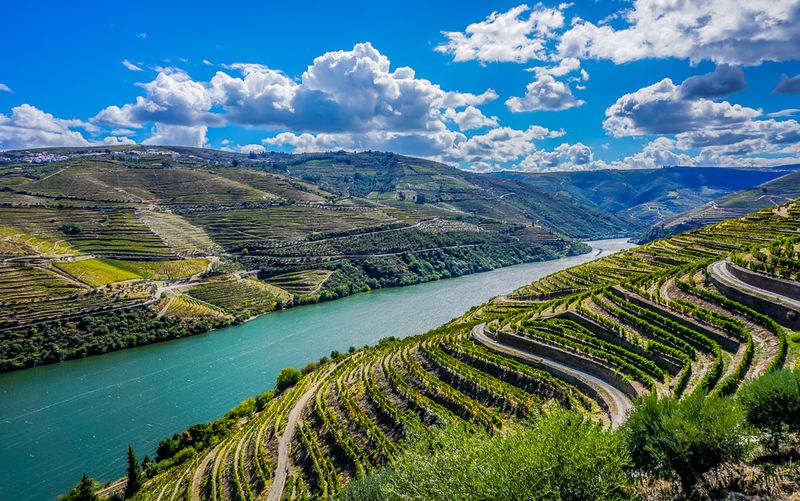
Nestled in the heart of the Douro Valley, Pinhão is synonymous with wine and beauty. The landscape is dominated by terraced vineyards, producing some of the world’s finest port wines.
A journey on the Douro River reveals the breathtaking scenery, with rolling hills meeting the water’s edge. Pinhão’s railway station is renowned for its azulejo tiles, depicting the wine harvest.
Visitors can indulge in wine tastings and vineyard tours, experiencing the region’s rich viticultural heritage. In Pinhão, every glass tells a story of tradition, passion, and the land’s bounty.
19. Aveiro
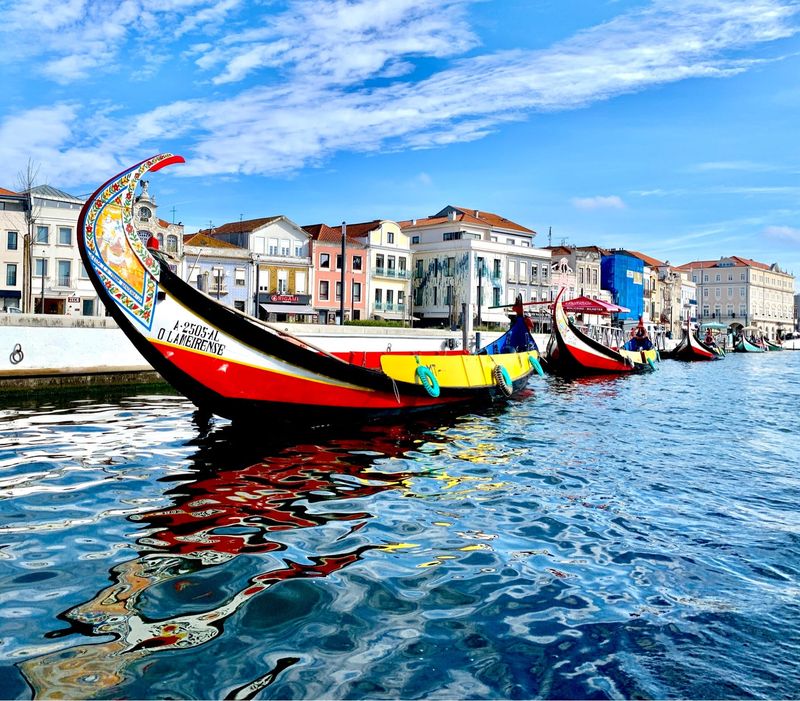
Aveiro, often referred to as the ‘Venice of Portugal’, enchants with its network of canals and colorful moliceiro boats. These traditional vessels glide gracefully through the waterways, offering a unique perspective of the city.
The Art Nouveau architecture adds a touch of elegance, with ornate buildings lining the streets. Aveiro’s culinary specialties, particularly the ovos moles, provide a taste of the region’s sweet traditions.
Festivals and cultural events bring vibrancy to the city, celebrating its maritime heritage. In Aveiro, every turn reveals beauty and history, inviting exploration and discovery.
20. Beja
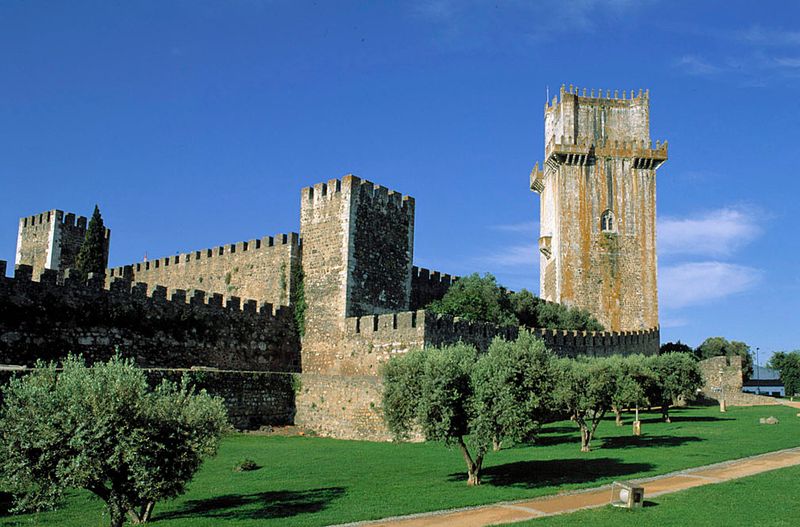
Beja, a city with ancient roots, is a gateway to the Alentejo region. The Beja Castle, with its towering keep, stands as a reminder of the city’s historical significance.
The city’s museums and archaeological sites offer glimpses into its past, from Roman ruins to Islamic artifacts. Beja’s streets are filled with cafes and shops, offering local crafts and delicacies.
Cultural events and festivals celebrate the region’s traditions, from music to gastronomy. In Beja, history is alive, and every visit is an opportunity to connect with Portugal’s rich tapestry of cultures.
21. Silves
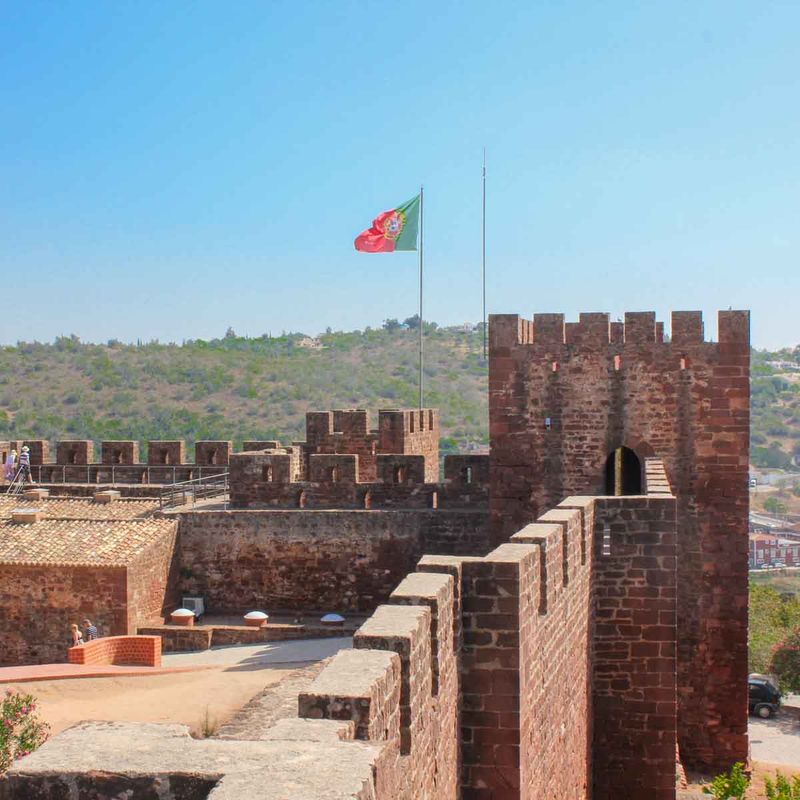
Silves, once the capital of the Algarve, is a city steeped in history. The red sandstone walls of Silves Castle dominate the skyline, a testament to its Moorish past.
Exploring the castle offers a journey through time, with panoramic views of the surrounding countryside. The city’s cobblestone streets and historic center invite leisurely strolls.
Silves is also known for its vibrant festivals, celebrating its heritage with music and dance. Local cuisine, featuring fresh seafood and regional wines, adds to the city’s allure. In Silves, every stone has a story to tell.
22. Évora

Évora, a UNESCO World Heritage site, is a treasure trove of history and culture. The Roman Temple, with its Corinthian columns, stands as a focal point amidst the city’s architectural wonders.
The narrow streets lead to hidden gems, from the Chapel of Bones to ancient cathedrals. Évora’s rich history is reflected in its museums and galleries, offering insights into the region’s past.
The city’s vibrant cultural scene ensures a lively atmosphere, with festivals celebrating everything from music to cuisine. In Évora, history and modernity coexist harmoniously, creating a dynamic tapestry of experiences.
23. Vila Real
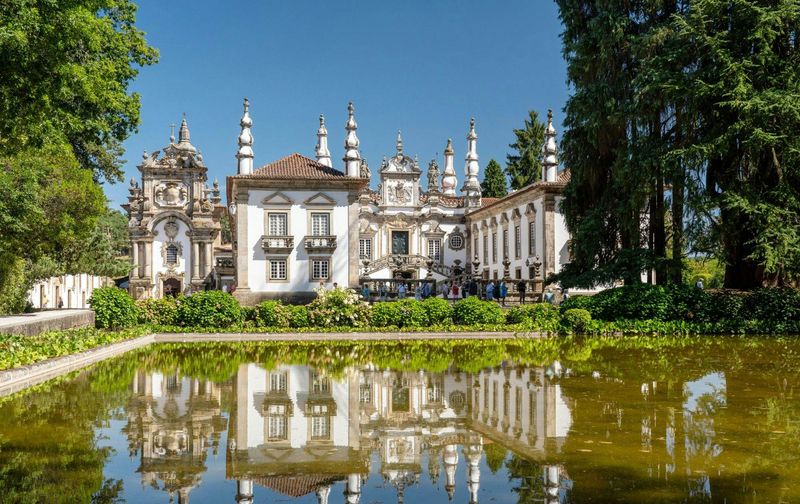
Vila Real is a city nestled in the breathtaking landscapes of northern Portugal. The stunning Mateus Palace, with its baroque architecture and elegant gardens, captures the essence of Portuguese grandeur. Walking through its halls feels like stepping back in time.
The city offers more than historical beauty. Its lively street markets and local gastronomy, featuring the famous “covilhete” pastry, provide a taste of authentic Portuguese life. Vila Real’s proximity to the Serra do Marão mountains invites nature enthusiasts to explore its scenic trails.
Fun fact: Vila Real hosts an annual car race, known as the Circuito Internacional de Vila Real, attracting motorsport fans worldwide.

